THE GARDEN TOOLKIT
A selection of reliable tools makes gardening tasks easier and more likely to reap favorable results. Invest in sturdy, well-made models that will hold up to regular use. Stainless steel is a rust-free option, though it will still need regular cleaning.
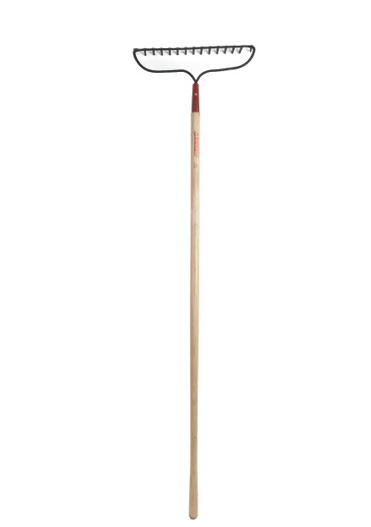
BEDDING RAKE
Also known as a hard rake, this tool levels garden beds, moves soil, and removes large debris. It’s also great for spreading mulch or compost over a bed that already exists.
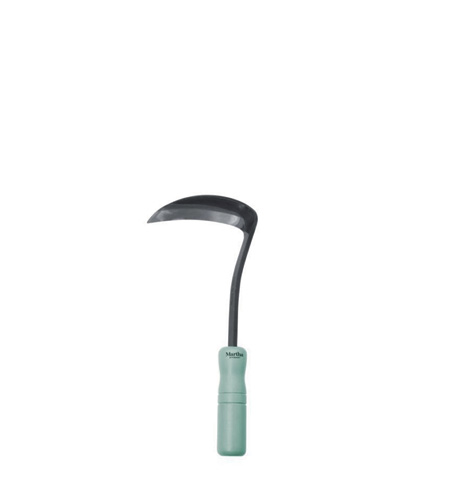
japanese weeder
Use this underrated favorite whenever you need to do some light weeding or to aerate the soil around the root systems of your plants.
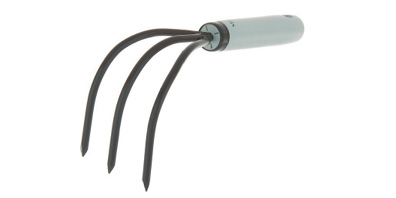
HAND CULTIVATOR
Designed to loosen and rough up the soil in preparation for planting, this tool’s three sharp prongs also allow you to remove strong weeds.
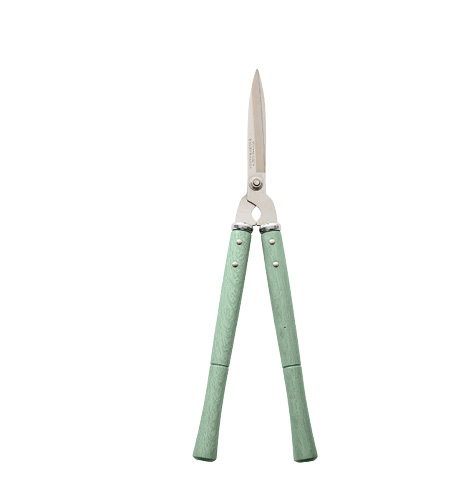
HEDGE SHEARS
In addition to maintaining boxwood and topiaries, these are ideal for clipping grass around trees, walls, and fences. The Japanese model shown here has very sharp, rust-proof steel blades.
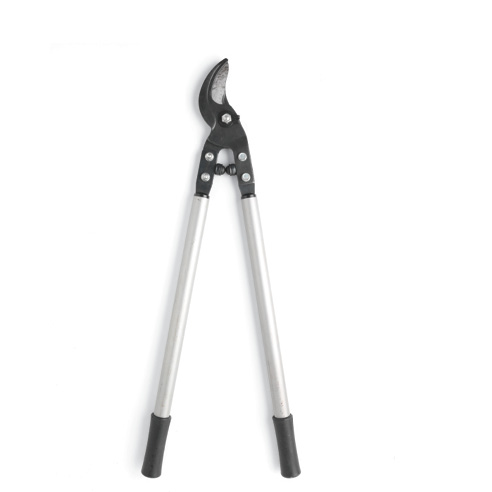
LOPPERS
Reach for this when you want to remove branches that are too large to be cut with pruners. Loppers with long but lightweight aluminum handles provide leverage to slice through branches up to 2 inches thick.
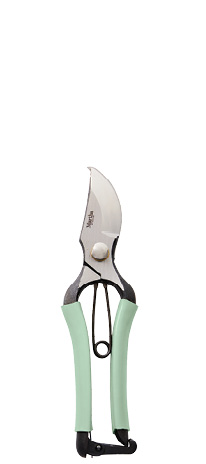
SECATEUR
This essential tool (also known as pruning shears or hand pruners) is excellent for deadheading, pruning, cutting flowers and small branches, and cutting back annuals and perennials. Try to purchase “bypass” shears, which cut with a scissorlike action.
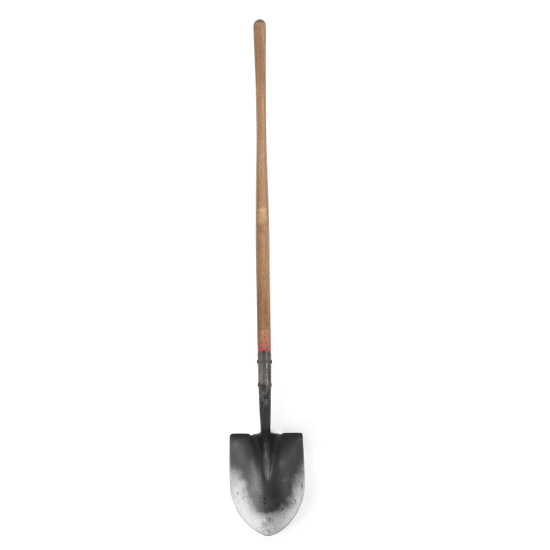
SHOVEL
A long handle is best for heavy digging and lifting, such as when you break new ground. A shovel also comes in handy when transporting coarse mulch, leaf mold, or compost.
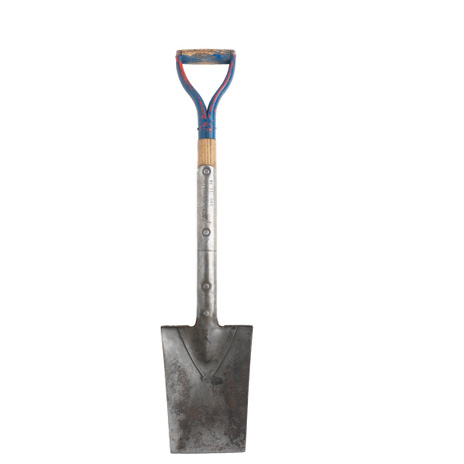
SPADE
Cut and loosen soil first with a spade, then lift it with a shovel. Or use the spade to edge beds, cut and lift sod, or turn over a new garden bed. Buy one with metal straps that reinforce the handle.
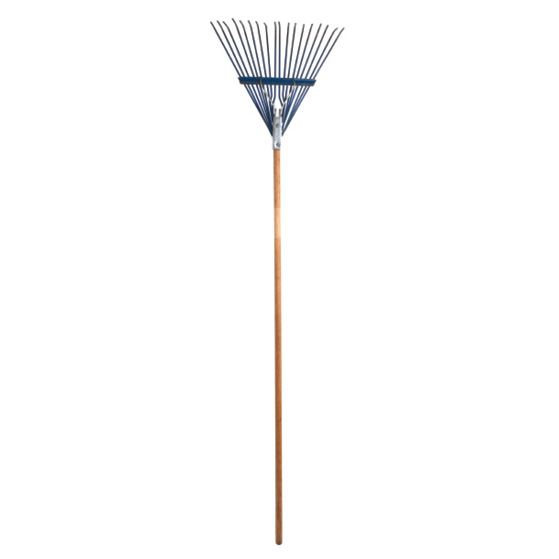
SPRING RAKE
While its primary use—gathering fallen leaves from lawns and garden beds—is apparent, a rake can also be used during the final grading of a fresh garden bed. Metal tines are more durable; bamboo ones are lighter and easier to wield.

garden fork
This tool levels garden beds, moves soil, removes large debris, and spreads mulch or compost. It’s also used to loosen and lift perennials when dividing. Never use this on grass or around shrubs.
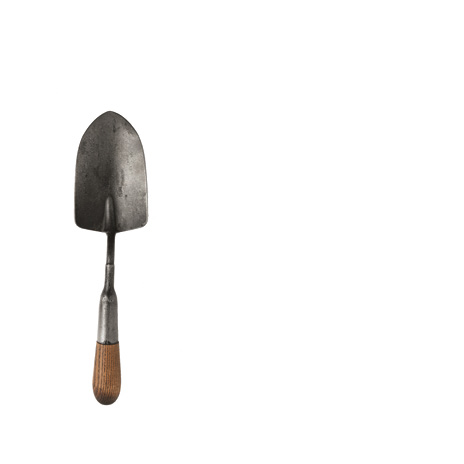
TROWEL
This tool is just right for planting small container plants, seedlings, and bulbs. Keep one indoors for houseplants, and another in the potting shed.
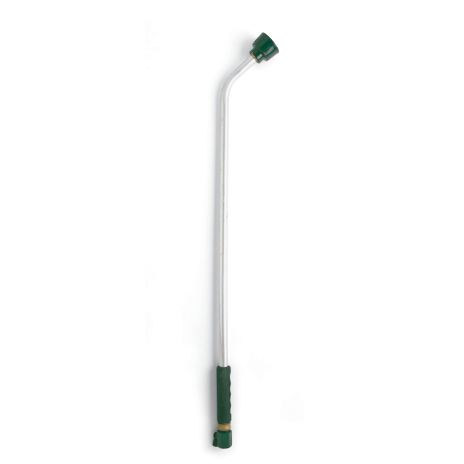
WATERING WAND
A wand allows easy watering of hanging baskets or any other plants that require an extended reach. The rose (at top, also called a water breaker) functions like a showerhead. Look for a model with adjustable flow settings and multiple nozzles.
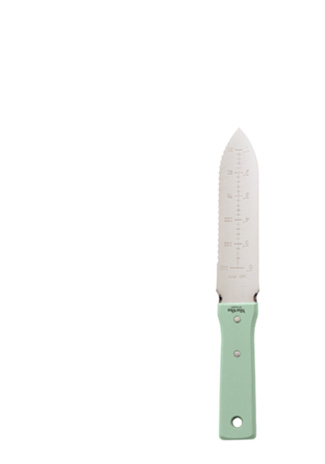
hori hori
This special “knife” is used to slice easily through weeds, roots (when transplanting or dividing), and root-balls (such as when planting a tree). The model above even doubles as a bulb planter, the concave stainless-steel blade etched with digging marks to use a guide.
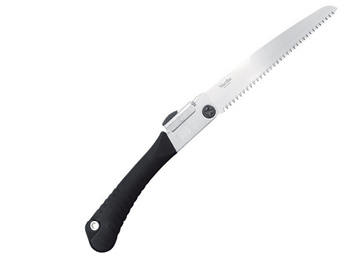
hand saw
A hand saw is a must for pruning shrubs, rosebushes, and even smaller tree branches. Buy a foldable model where the blade tucks into the handle, for safety and storing as well as portability; then you can carry it with you (in a pocket, for example) as you work.